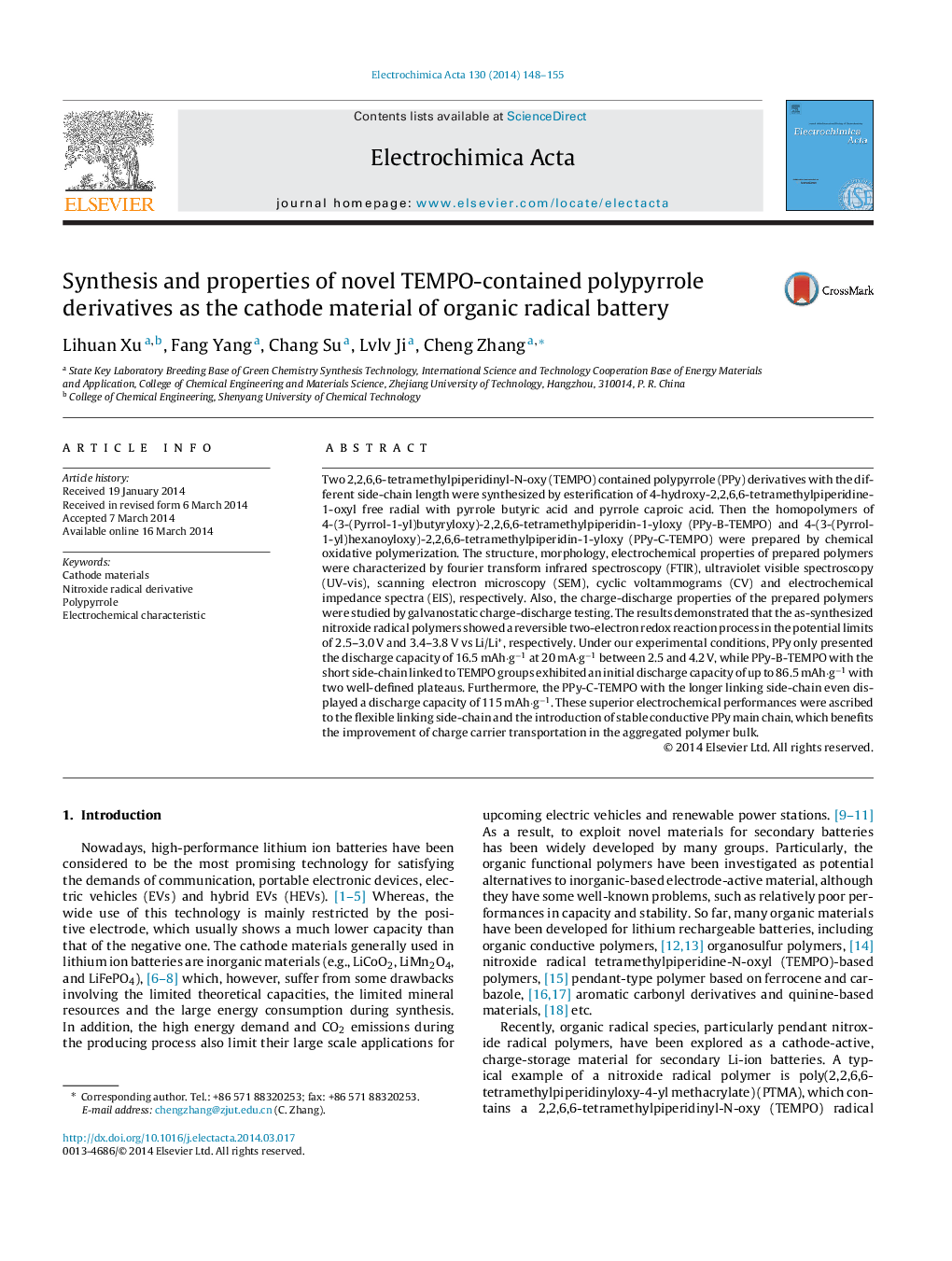| Article ID | Journal | Published Year | Pages | File Type |
|---|---|---|---|---|
| 185837 | Electrochimica Acta | 2014 | 8 Pages |
Two 2,2,6,6-tetramethylpiperidinyl-N-oxy (TEMPO) contained polypyrrole (PPy) derivatives with the different side-chain length were synthesized by esterification of 4-hydroxy-2,2,6,6-tetramethylpiperidine-1-oxyl free radial with pyrrole butyric acid and pyrrole caproic acid. Then the homopolymers of 4-(3-(Pyrrol-1-yl)butyryloxy)-2,2,6,6-tetramethylpiperidin-1-yloxy (PPy-B-TEMPO) and 4-(3-(Pyrrol-1-yl)hexanoyloxy)-2,2,6,6-tetramethylpiperidin-1-yloxy (PPy-C-TEMPO) were prepared by chemical oxidative polymerization. The structure, morphology, electrochemical properties of prepared polymers were characterized by fourier transform infrared spectroscopy (FTIR), ultraviolet visible spectroscopy (UV-vis), scanning electron microscopy (SEM), cyclic voltammograms (CV) and electrochemical impedance spectra (EIS), respectively. Also, the charge-discharge properties of the prepared polymers were studied by galvanostatic charge-discharge testing. The results demonstrated that the as-synthesized nitroxide radical polymers showed a reversible two-electron redox reaction process in the potential limits of 2.5–3.0 V and 3.4–3.8 V vs Li/Li+, respectively. Under our experimental conditions, PPy only presented the discharge capacity of 16.5 mAh·g−1 at 20 mA·g−1 between 2.5 and 4.2 V, while PPy-B-TEMPO with the short side-chain linked to TEMPO groups exhibited an initial discharge capacity of up to 86.5 mAh·g−1 with two well-defined plateaus. Furthermore, the PPy-C-TEMPO with the longer linking side-chain even displayed a discharge capacity of 115 mAh·g−1. These superior electrochemical performances were ascribed to the flexible linking side-chain and the introduction of stable conductive PPy main chain, which benefits the improvement of charge carrier transportation in the aggregated polymer bulk.
